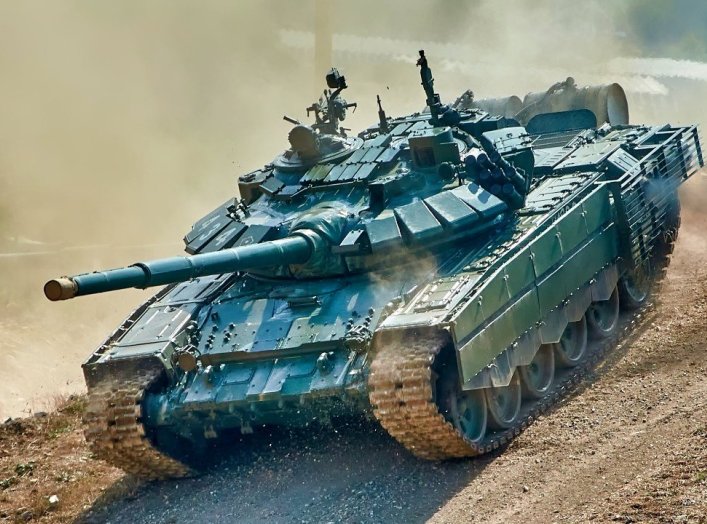American politicians who question the need for U.S. aid to Ukraine should visit Ukraine—as a few have done—to get a sense of the people who are defending the front lines of democracy and freedom and who are only asking for material and financial support.
Amid the full-scale war that has engulfed Ukraine, Kyiv is now commemorating the tenth anniversary of the uprising known as the Maidan Revolution of Dignity. The name comes from the capital city’s central square, which became an encampment of protesters from across Ukraine demanding that the government approve a landmark Association Agreement with the European Union. Although then-president Viktor Yanukovich had repeatedly assured that he would sign the overwhelmingly popular agreement, he reneged under pressure from Russian President Vladimir Putin, for whom Ukrainian integration with Western Europe was anathema. Public opinion massively turned against Yanukovich. After almost three months of resistance in freezing temperatures, pitched battles with the thuggish Berkut riot police, and the slaughter of over 100 civilians by government snipers, the revolution triumphed. The Kyiv Municipal Museum currently has an exhibition on the Maidan and the “Heavenly Hundred,” as those killed there are known. It’s a poignant reminder of the cost of standing up against a repressive regime and civil opposition’s power.
I visited Kyiv in 2014, shortly after Yanukovich fled. Ambling around the tents and field kitchens that had sprung up in Kyiv’s premier retail district, I was amazed at the patriotism and determination of the Ukrainians as they prepared to defend their country against the inevitable reaction from the Kremlin. Several of those with whom I spoke asked why the United States and Britain, guarantors of Ukrainian independence and territorial integrity under the 1994 Budapest Memorandum (in which Ukraine voluntarily relinquished the nuclear weapons on its soil), had done nothing to stop Russia from occupying and annexing Crimea and from sending troops and equipment to help separatists in the eastern Donbas region.
In the subsequent years, Ukraine first fought a localized conflict of varying intensity in the Donbas and then against a massive invasion beginning in February 2022. While many Western leaders and Russia experts predicted a swift Russian conquest, Ukrainians—and perhaps those who had witnessed Ukrainian resolve in the Maidan and in the Donbas—were less surprised when they outwitted, outmaneuvered, and outfoxed the vaunted Russian military machine. Ukrainians from all walks of life joined volunteer battalions and proved that “citizen soldiers” defending their homes and families were more than a match for Russian professional troops and, later, conscripts and convicts. The invaders soon realized how mendacious the claims of their leaders to be “liberating” Ukrainians.
As the West gradually recognized Ukraine’s resilience and fighting spirit, military aid and equally vital financial assistance began to flow. The Ukrainians made good use of those weapons, ultimately reversing the tide of Russian occupation in large swathes of land in the north, south, and east. As cities, towns, and villages were liberated, evidence of war crimes committed by the occupiers was discovered: mass graves with bodies bearing signs of torture, homes looted and destroyed, and accounts from liberated citizens of rape and kidnapping. These reports galvanized public opinion in Ukraine and abroad, convincing Ukrainians that negotiations with those responsible for such atrocities are impossible.
Ukrainians are grateful for the generous assistance that friendly countries have provided, without which their cause would likely have failed despite their valor. What frustrates them is the West’s reluctance to provide the weapons needed to achieve an outright victory, particularly advanced fighter aircraft and long-range missiles capable of striking Russian ammunition and fuel depots, command posts, and staging areas beyond the range of artillery and the HIMARS missiles currently being provided. While many of Ukraine’s “asks” have been eventually satisfied (including soon-to-be delivered F-16 fighters and longer-range ATACMS missiles), this has been slow and often too late to achieve a decisive advantage on the battlefield. The much-anticipated 2023 summer counteroffensive fizzled largely because of the lack of air power, without which Ukrainian armored units were vulnerable to helicopter gunships and artillery. The consequence of such indecisiveness is a war of attrition, with the Russians suffering disproportionate casualties but seemingly able to sustain heavy losses indefinitely. Ukrainians, however, show no slackening in their determination to free their land from those they no longer consider Slavic brothers but rather Tolkienian “orcs” who must be expelled.
The delay in the approval of the current $60 billion U.S. aid bill for Ukraine is creating anxiety not only in Ukraine but along NATO’s eastern front, where the outcome of the Russo-Ukrainian War is seen in existential terms. Before arriving in Kyiv, I spent several days in Warsaw, where I was asked about diminishing U.S. support for Ukraine and NATO in general. One Pole told me that without the United States backing NATO, Putin would be in Warsaw in a month. I tried to reassure them—and persuade myself—that there was still a bipartisan majority in Congress in favor of continuing military and financial assistance to Ukraine and in support of our treaty obligations in the event of any attack on NATO territory.
Two weeks in Kyiv have resulted in mixed impressions. Frequent air raid alarms and a missile strike on a residential building attest to this being a war zone. At the same time, the daily routine continues as normal in many respects; shops, restaurants, and bars are flourishing, and some remain open even during air raid alerts. Such nonchalance, if not fatalism, is a tribute to the air defenses that protect Kyiv from even the most advanced ballistic missiles, such as the hypersonic Kinzhal that Putin once boasted was unstoppable. Thanks to U.S.-provided Patriot anti-missile batteries, few Russian missiles or drones hit the capital. That is not so in other cities, where civilian fatalities and injuries are considerable.
American politicians who question the need for U.S. aid to Ukraine should visit Ukraine—as a few have done—to get a sense of the people who are defending the front lines of democracy and freedom and who are only asking for material and financial support. If the long train ride (there are no commercial flights) or considerations of personal safety rule out visiting Ukraine, a visit to Poland or the Baltic states will leave no doubt about how fervently the citizens of those friendly and allied countries want the U.S. and other democracies to stay engaged and committed in their struggle against an irredentist Russia on their borders.



